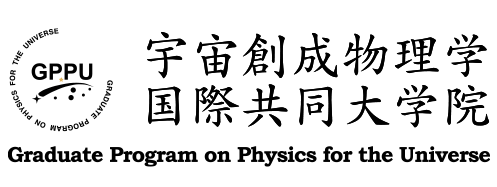GPPU Seminar
Nuclear Fission in the 21st Century:
A Review of Experimental Advances and Phenomenology
Andrei Andreyev
(University of York and JAEA)
Date
15:00-17:00, June 11th, 2019Place
Room 745, Science Complex B (H-03) mapAbstract
In the last two decades, through technological, experimental and theoretical advances, the situation in experimental fission studies has changed dramatically. With the use of advanced production and detection techniques much more detailed and precise information can now be obtained for the traditional regions of fission research. Crucially, new regions of nuclei have become routinely accessible for fission studies, by means of radioactive ion beams.
The talk will briefly introduce classical concepts of fission, followed by examples of the recent developments in experimental fission techniques, in particular the resurgence of transfer-induced fission reactions with light and heavy ions, the emerging use of inverse-kinematic approaches, both at Coulomb and relativistic energies, and of fission studies with radioactive beams. The presentation will closely follow the recent comprehensive review “Nuclear fission: a review of experimental advances and phenomenology” [1].
The emphasis on the fission-fragment mass and charge distributions will be made. A particular attention will be given to the low-energy fission in the so far scarcely explored nuclei in the very neutron-deficient lead region. They recently became the focus for several complementary experimental studies, such as β-delayed fission with laser-ionized mass-separated radioactive beams at ISOLDE(CERN) [2,3], Coulex-induced fission of relativistic secondary beams at FRS(GSI, Germany), and several prompt fusion–fission studies [1]. The synergy of these approaches allows a unique insight in the new region of asymmetric fission around 180Hg, recently discovered at ISOLDE [2,3]. Recent extensive theoretical efforts in this region will also be outlined.
The unprecedented high-quality data for fission of heavy actinides, completely identified in Z and A, by means of reactions in inverse kinematics at FRS(GSI), SAMURAI(RIKEN, Japan), and VAMOS(GANIL, France) will be also reviewed. These experiments explored an extended range of heavy elements, covering both asymmetric, symmetric and transitional fission regions.
The talk will conclude with the discussion of the new experimental fission facilities which are presently being brought into operation, along with promising 'next-generation' fission approaches, which might become available within the next decade.
[1] A.N. Andreyev, K. Nishio, K.-H. Schmidt, Reports on Progress in Physics, 81,1 (2018)
[2] A.N. Andreyev et al, Physical Review Letters, 105, 252502 (2010)
[3] A.N. Andreyev, M. Huyse, P. Van Duppen, Reviews of Modern Physics, 85, 1541 (2013)
Point
GSP 1Contact: Yusuke Tanimura (tanimura [at] nucl.phys.tohoku.ac.jp)
